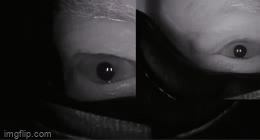The vestibular system …. Sounds familiar right?! That’s because it is! We’ve actually done a couple of blogs that talk about the background, what the vestibular system is, and how it works! If you are interested in a little refresh, you can find those blog posts on our main blog page. So for this blog, what we want to do is dive right into what WE (Tele-Rehab 2.0) actually do with the vestibular system and the process of providing virtual vestibular assessments.

First off, what exactly IS vestibular therapy? Vestibular rehabilitation therapy is a specialized form of therapy intended to alleviate symptoms caused by vestibular disorders. It is an exercise-based program primarily designed to reduce vertigo, dizziness, visual disturbance, and/or imbalance and falls.
In a Tele-Rehab 2.0 assessment, we run a variety of screening tests that rule out potential causes of the patient’s symptoms. The first series of tests is an oculomotor exam. The vestibular therapist looks for abnormal eye movements through tests such as tracking a finger, holding your gaze off to the side, or keeping your eyes on a target while your head is being moved. What we really want to look at is how well the eyes and inner ear work together, and these different tests are a key element to that. We use our telepresence robot to make sure the hub therapist gets a close view of the eyes so they can make an accurate diagnosis.
Now, you may be wondering … why assess my eyes for inner ear vestibular problems? This is because vestibular problems can cause abnormal involuntary eye movements, which can bring on a slew of other symptoms. Dizziness, headaches, nausea… sound familiar? Our vestibular system senses head movement and helps keep our vision stable via the vestibulo-ocular reflex. So if your brain thinks something different than what your eyes are seeing (like when your vestibular system sends a wonky message), your eyes might move based on that wonky message instead of based on what you can see. Those eye movements can help us identify if you’re getting some of those mixed messages. Crazy right ?!

Sometimes, though, looking at the eyes normally isn’t enough. Some of those wonky eye movements can only be seen when our eyes don’t have anything to focus on. So we use these fancy infrared goggles to make it so the patient can’t see anything, but we can still see their eyes and how they move. “Invisible” infrared lights illuminate the eyes of our patients and assist in the differential diagnosis between central and peripheral vestibular disorders. But what is the difference between a central and peripheral vestibular disorder? Central disorders are in the brain itself, and usually cause sensations of spinning even though the person remains still. Central disorders can also cause hallucinations that your surroundings are moving. Peripheral vestibular dysfunction includes pathology of the inner ear vestibular structures. This dysfunction diminishes available sensory information regarding head position and movement. Patients with a peripheral disorder often have issues with visual fixation, experience a falling sensation, nausea, vomiting, or other more typical ‘vertigo’ symptoms.

Now let’s talk systems! Equilibrioception (our balance system) is the result of a number of sensory systems working together: the eyes (visual system), the inner ears (vestibular system), and the body’s sense of where it is in space (proprioception). When all three of these systems are working well, we have a good reliable sense of balance. But sometimes one or more of these systems can have problems and that can lead to dizziness, falls and a higher risk of injury.
A Tele-rehab 2.0 assessment includes numerous balance tests that help to differentiate between all three systems. Since balance is controlled by all three systems working together, it can be challenging to narrow down which system is malfunctioning. Overall degradation of our balance system does happen with age, however, vestibular problems can make these balance issues much more pronounced. In order to test if the balance problems are caused by the vestibular system, we have to exclude the other systems from providing feedback. This is often done just through closing the eyes, thereby eliminating feedback from the visual system, or through standing on a soft surface like a cushion, to change the feedback from proprioception. This can highlight whether the vestibular system is doing well at providing balance information, or is having some problems. All of this data is recorded by our markerless motion capture system, Kinetisense.
One of the comments we have heard from a lot of patients is that these symptoms are very scary. Most people have never heard of the vestibular system, and have no idea what a massive effect one minor complication can have on the body. It can be incredibly isolating to go through something like this and feel alone, scared, and uninformed. This is the main reason we’ve been focusing on vestibular rehab so much in these blogs – we hope that by educating people on the vestibular system, we can help make these symptoms less scary.

We’ve also found that vestibular therapy is really important and not widely available in a lot of provincial healthcare systems. In Alberta, vestibular assessment is not typically publicly funded. Additionally, people who live in rural communities often do not have easy access to a vestibular trained therapist. But most people will likely know at least one person who has had some sort of vestibular issue. While vestibular disorders are not common, they happen often enough that education and the ability to access vestibular therapy when needed is important for all people, no matter where they live.
We hope that you learned a little bit about vestibular care from our blog today. Tele-Rehab 2.0 is hoping to change the reality of vestibular care in Alberta. Ask your doctor about getting access to our services through AHS!
